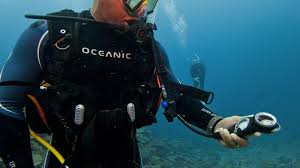Aluminum scuba tanks offer 5 key benefits over steel alternatives: they are lighter (average 31 lbs vs. 28-35 lbs for steel), more buoyant (reducing weight needs), corrosion-resistant (no rust), and cheaper (100 less). While less durable (5-10 years vs. steel’s 20+), their affordability and ease of handling make them popular for recreational divers. Aluminum tanks also float when empty, enhancing safety.
Lighter and Easier to Carry
Aluminum tanks have a clear advantage here: they’re noticeably lighter than steel tanks. A standard 80-cubic-foot aluminum tank weighs around 31 pounds (14 kg) when empty, while a similar-capacity steel tank can range from 28 to 35 pounds (12.7–15.9 kg) depending on the model. That might not sound like a huge difference, but after a long day of diving, those extra pounds add up.
A 100-cubic-foot aluminum tank weighs roughly 38 pounds (17.2 kg), whereas a steel tank of the same capacity can hit 42 pounds (19 kg) or more. For divers who travel frequently, this matters—airlines often enforce strict weight limits on checked baggage, and a lighter tank means more room for other gear.
Steel tanks tend to be denser and more compact, which can make them awkward to carry, especially for smaller divers. Aluminum’s slightly larger diameter (typically 7.25 inches vs. steel’s 7.0–7.1 inches) gives a better grip, reducing fatigue when moving them around.
A full 80-cubic-foot aluminum tank is about 2 pounds (0.9 kg) negatively buoyant, but near-empty, it becomes 3–4 pounds (1.4–1.8 kg) positively buoyant, requiring extra weight to stay submerged. Steel tanks, in contrast, stay closer to neutral buoyancy throughout the dive.
Key Comparisons at a Glance
| Feature | Aluminum Tank (80 cf) | Steel Tank (80 cf) |
|---|---|---|
| Empty Weight | 31 lbs (14 kg) | 28–35 lbs (12.7–15.9 kg) |
| Buoyancy Shift | +3 to +4 lbs when empty | Nearly neutral |
| Diameter | 7.25 inches | 7.0–7.1 inches |
| Travel Friendliness | Easier due to lower weight | Heavier, may exceed baggage limits |
For recreational divers who prioritize portability and ease of use, aluminum tanks are often the better choice. They’re lighter, simpler to transport, and more forgiving for beginners. Steel tanks have their place—especially for technical divers who need consistent buoyancy—but if you’re looking for a tank that’s less of a burden to carry, aluminum wins.
Better Buoyancy Control
An 80-cubic-foot steel tank starts around 4 pounds (1.8 kg) negative when full and only shifts to about 2 pounds (0.9 kg) negative when empty. That means your weight distribution stays consistent, reducing the need for constant adjustments.
A full 80-cubic-foot aluminum tank is roughly 2 pounds (0.9 kg) negative, but as you breathe it down, it becomes 3–4 pounds (1.4–1.8 kg) positive near-empty. This forces divers to compensate with extra lead weight at the start—typically 4–6 pounds (1.8–2.7 kg) more than with a steel tank—to avoid bobbing up like a cork at the end of the dive.
Steel is about 2.5 times denser than aluminum, so less tank volume is needed to hold the same amount of air. A standard aluminum 80-cubic-foot tank has an internal volume of about 0.39 cubic feet (11 liters), while a steel tank of the same capacity is closer to 0.29 cubic feet (8.2 liters). That extra displacement in aluminum tanks is what causes the buoyancy shift.
For technical divers doing deep or long dives, steel’s stability is a game-changer. Needing less weight means better trim and reduced drag. Recreational divers might not notice as much—but if you’ve ever struggled to stay level during safety stops, you know how frustrating buoyancy swings can be.
Buoyancy Comparison: Aluminum vs. Steel (80 cf Tank)
-
Starting Buoyancy (Full Tank):
- Aluminum: -2 lbs (-0.9 kg)
- Steel: -4 to -5 lbs (-1.8 to -2.3 kg)
-
Ending Buoyancy (Empty Tank):
- Aluminum: +3 to +4 lbs (+1.4 to +1.8 kg)
- Steel: -2 lbs (-0.9 kg)
- Additional Weight Needed (Aluminum): 4–6 lbs (1.8–2.7 kg)

Lower Cost, Good Value
A brand-new 80-cubic-foot aluminum tank typically runs between 350, while a comparable steel tank costs 600. That's a 40-50% price difference right off the bat. Even used aluminum tanks are cheaper, usually selling for 250 versus steel's 450 range.
Since they're naturally corrosion-resistant, you won't need frequent visual inspections or hydrotesting beyond the standard 5-year requirement. Steel tanks, while durable, can develop rust if not properly cared for—especially in saltwater environments. A single professional cleaning and inspection for a steel tank costs 100, adding up over a decade of use.
Here's the breakdown of 10-year ownership costs for a recreational diver:
-
Aluminum Tank ($300 initial cost)
- 2 hydrotests ($50 each)
- Basic maintenance ($20/year)
- Total: ~$500
-
Steel Tank ($500 initial cost)
- 2 hydrotests ($50 each)
- Rust prevention treatments ($30/year)
- Total: ~$800
While steel tanks last longer (20+ years vs. aluminum's 10-15 year lifespan), most recreational divers replace gear every 7-10 years anyway. Unless you're logging 100+ dives annually, aluminum delivers better value for casual use. The only exception? Technical divers who need steel's buoyancy characteristics—for them, the extra cost is justified. But if you're looking for affordable, low-hassle gear that gets you underwater without breaking the bank, aluminum is the smart financial choice.
Less Rust, Less Maintenance
The numbers don’t lie: approximately 30% of steel tank failures in hydrostatic tests are due to rust-related issues, compared to less than 5% for aluminum tanks. A single rust spot inside a steel tank can lead to a 300 repair bill for grinding and recoating, or even render the tank unsafe. Aluminum tanks avoid this entirely—their worst-case scenario is cosmetic oxidation, which doesn’t affect structural integrity.
Maintenance routines highlight the difference. Steel tanks demand:
- Annual visual inspections (50 per inspection)
- Biannual cleaning for saltwater divers (60 per cleaning)
- Protective oil sprays to prevent internal rust ($15 per treatment)
Aluminum tanks, by contrast, need only:
- Basic rinsing after each dive (free)
- Standard 5-year hydrotests (75 per test)
A well-maintained steel tank lasts 20-30 years, but 1 in 4 requires major rust repairs by year 15. Aluminum tanks average 15-20 years with zero corrosion-related interventions. Over a decade, this means 500 in saved maintenance costs per aluminum tank—a significant figure for dive shops managing 50+ tanks.
Corrosion Resistance Comparison
| Factor | Aluminum Tanks | Steel Tanks |
|---|---|---|
| Internal Rust Risk | <5% failure rate | 30% failure rate |
| Saltwater Tolerance | No special care | Requires rinsing within 2 hours |
| Lifespan Impact | None | Can shorten by 5-10 years |
| 10-Year Maintenance Cost | 150 | 600 |
Final verdict: Aluminum tanks won’t punish you for forgetting a rinse—and that peace of mind is priceless.





Leave a comment
All comments are moderated before being published.
Situs ini dilindungi oleh hCaptcha dan berlaku Kebijakan Privasi serta Ketentuan Layanan hCaptcha.